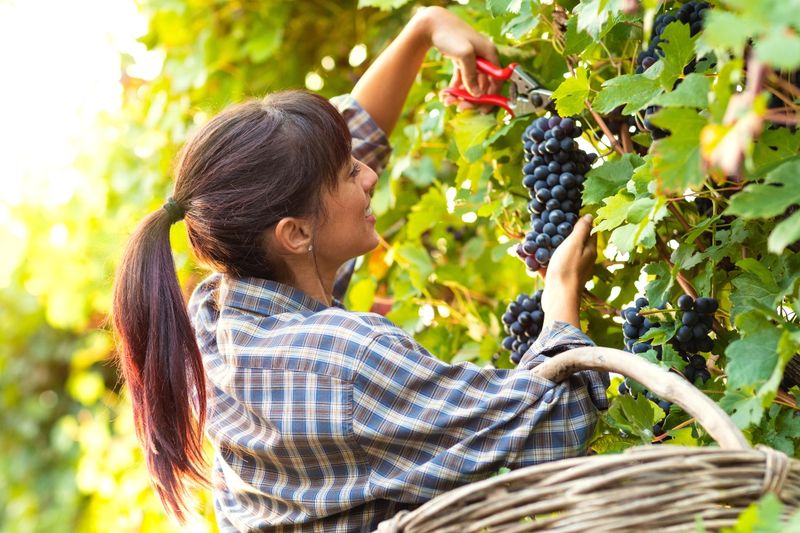Your Guide to Bountiful Harvests
Tips From Field to Fork and Beyond


Why focus on harvest at this time of year?
For experienced farmers, harvest plans are already in motion, perhaps even well underway. And for those who idealize rural life through the lens of a Norman Rockwell painting or a Currier and Ives lithograph, the concept of harvest might be more of a nostalgic daydream than a practical concern.
This article, however, is intended for those who fall somewhere in between. You might be launching a new agricultural business, taking over a family operation or starting fresh with your partner as you build a life rooted in farm living.
If this sounds familiar, you're likely eager to absorb practical insight — much like home-baked bread soaking up traditional chicken gravy.
The joy of harvest is something that can’t be fully captured in words — it’s an experience that must be lived. Still, making the most of that experience requires preparation, and that’s where knowledge plays a vital role.
Consider this a practical introduction to one of the most significant events in the acreage farming calendar: the fall harvest.
It offers essential guidance on key aspects such as timing, tool selection, harvesting techniques and storage management. Together, these basics provide a solid foundation for understanding one of the most rewarding elements of farm life.

The joy of harvest is something that can’t be fully captured in words — it’s an experience that must be lived.
Best Practices for a Successful Harvest
Harvesting practices on acreage should accomplish several things, such as maximizing yield, maintaining crop health and ensuring sustainability. In order to accomplish these things, priorities must be set based on best practices. These include understanding individual crop needs, harvesting at the optimal time, handling produce gently and implementing proper storage solutions. Safety measures should also be in place to prevent injuries and cross-contamination.
Know When Your Crops Are Ready
When exactly is the best time to harvest? While it typically falls in late summer or early fall, harvest is not confined to a single day or even a single week.
Each crop has its own ideal harvest window, making it essential to know the specific needs of what you grow.
Leafy greens, for instance, are best picked when young and tender, while root vegetables require more time to reach maturity. Careful research and a crop-specific timeline will help maximize efficiency and prevent overlapping harvests that can lead to exhausting days and avoidable stress.
Also important is the timing of crop maturity.
As you probably know, fruits and vegetables not only mature at different times but also in different ways. For example, an orange ripens on the tree.

Once picked, it will not ripen beyond that point. An apricot, on the other hand, will continue to ripen and go right to rotting after that.
Harvesting at the right stage of maturity for that crop will ensure the best flavor, texture and yield. It's also wise to avoid harvesting immediately after rainfall to reduce the risk of spoilage.
Finally, there is the factor of what time of day to harvest. As a rule, early in the morning is ideal. At that time, plants are well-hydrated and less susceptible to wilting. And because plants lose moisture as the day goes on, avoid harvesting during the hottest part of the day.
Hand-Harvesting Tips for Healthy Crops
Crops on acreage are essentially an expanded version of the traditional family garden. Unlike large-scale farming, you’ll likely rely more on hand harvesting than on combines or reapers. With that in mind, it’s important to follow a few hand-picking best practices, such as:
- Handle plants gently to avoid damage.
- Keep tools such as knives, sickles and pruners sharp and well-maintained to ensure clean cuts (tools that pull or twist can harm both the produce and the plants).
- Maintain clean produce and tools which will help prevent contamination, especially for leafy vegetables. South Dakota State University recommends using dedicated gardening shoes and washing hands between handling different crops.
Storage
Proper storage techniques are essential for extending the shelf life of your produce, whether for sale or personal use. Methods such as ventilation, refrigeration and drying help preserve freshness.

Root cellaring, a traditional practice still favored by acreage farmers, involves storing crops in a cool, dark and humid environment to slow respiration and prevent dehydration — ideal for root vegetables such as potatoes, carrots and beets.
Modern approaches include:
- Employing modified-atmosphere packaging and controlled-atmosphere storage, which regulate oxygen and carbon dioxide levels to delay ripening.
- Curing certain crops such as garlic, onions and potatoes under specific temperature and humidity conditions promotes protective outer layers for longer storage.
Harvest Safely and Preserve for Tomorrow
Safety and sustainability contribute to preserving the joy of the harvest while ensuring its viability for future generations.

Machinery with moving parts used during harvest should have all guards, shields and safety features in place, and bystanders should be kept at a safe distance.
Avoid wearing shoes or clothing that have been in contact with livestock or potentially contaminated areas. And as important as the harvest is, it’s counterproductive to work while sick with a foodborne illness.
For those managing forested acreage, consider a forest management plan that outlines timber harvesting strategies such as regeneration, thinning and reforestation. Depending on the crop, watering at night can minimize evaporation, and creating buffer zones helps protect against runoff and erosion. Cover crops improve soil health and prevent weak growth.
If this article has you salivating over fresh harvest produce, take time to explore these topics further by consulting resources from the National Safety Council, the U.S. Department of Agriculture and university extension services, as a start.
Knowledge, preparation and responsible execution will maximize the joy of your labor. Before long, you’ll be living the dream — a real-life version of that classic Currier and Ives lithograph.
Tags:Tool Time

Acreage Life is part of the Catalyst Communications Network publication family.















